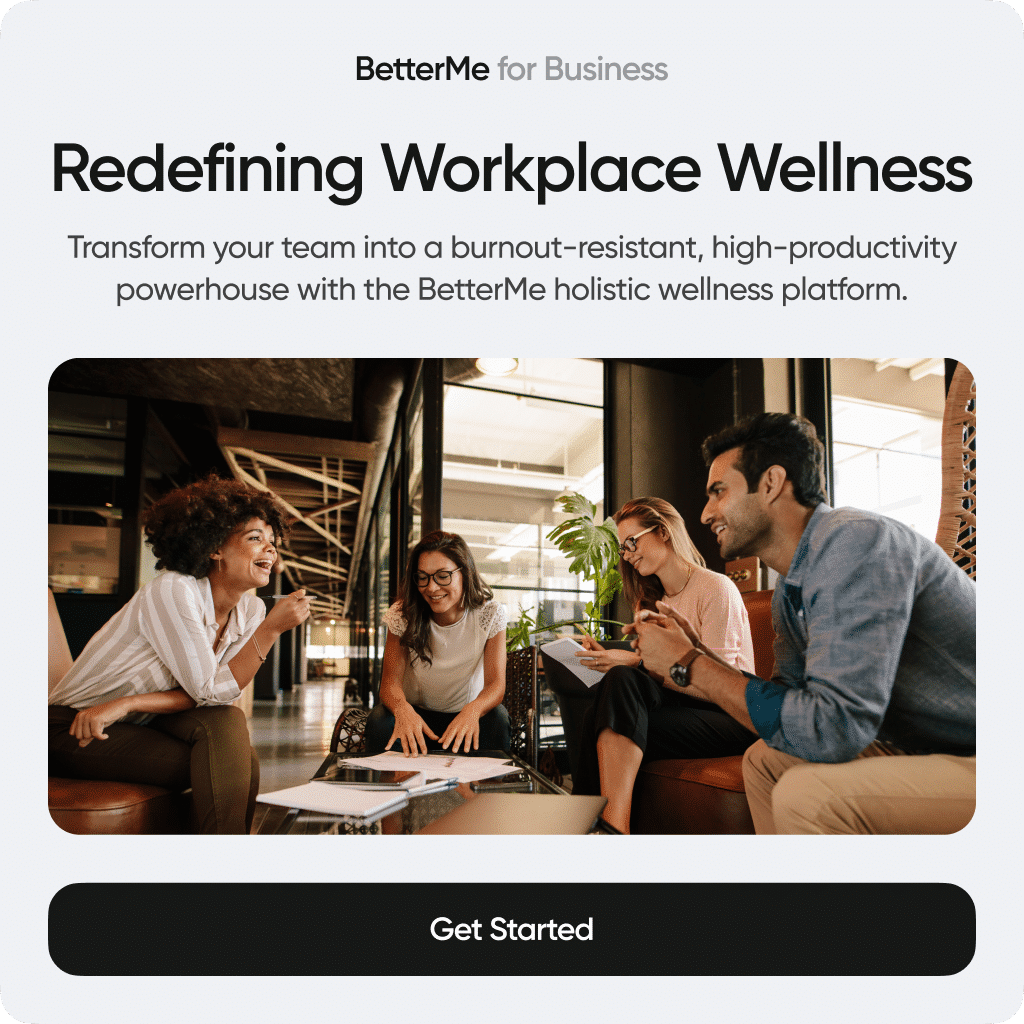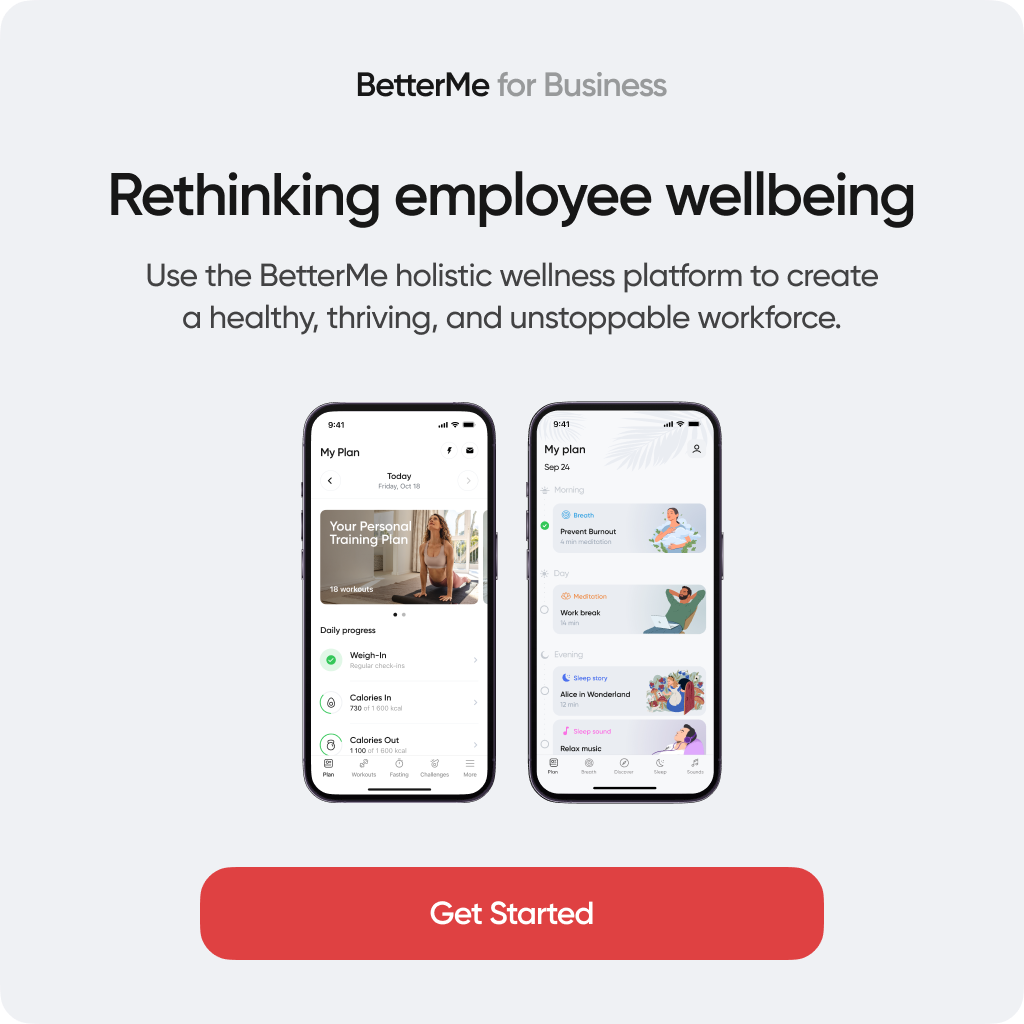Your approach to managing your emotions, handling stress, and general view of life are all factors that contribute to your mental well-being. The premise that there are many advantages to having a healthy sense of mental well-being is supported by research. It enables us to enjoy life, encourages resilience in trying circumstances, helps us set and achieve objectives, and helps us establish and sustain relationships.
Can Stress Lead To Burnout?
Stress is a natural part of life. No matter how much we may want to live a life without stress, it is a normal human reaction that is constant and necessary. Stress, such as the pressure of a deadline, can enhance mental health in modest doses as it increases energy, attentiveness, and productivity.
However, stress can be both mentally and physically exhausting if it lasts too long or is more than we can handle. Your mind and body may suffer severe consequences from persistent or sustained stress. Professional life will inevitably involve a certain amount of stress, but excessive and unrelenting pressure can result in stress burnout, which is a crippling condition. Workplace environments with low psychological safety are other examples of common stressors which can lead to a similar outcome.
Read More: From Stressed To Zen: Here’s How Chair Yoga At Work Can Make You Healthier And Happier
What Is Burnout?
Burnout is a state of total physical, mental, and emotional exhaustion, which can result in difficulties when participating in the things you would normally enjoy if you were healthy. You can lose interest in things that are important to you or start to feel increasingly despondent.
But first, we must understand where burnout comes from. Herbert Freudenberger, an American psychologist, coined the term “burnout” during the 1970s, using it to explain the effects of high aspirations and extreme stress in “helping” professions.
For example, doctors and nurses who put others before themselves often become “burned out” — exhausted, drained, and unable to function. The phrase is no longer simply used when referring to these helping professions or the shadow side of self-sacrifice. Anyone can be affected by burnout, including stressed-out professionals, famous people, overburdened employees, and stay-at-home moms. (1)
Interestingly, while burnout has long been a part of cultural jargon, it may now also be documented in your medical history. The 11th Revision of the International Classification of Diseases (ICD-11), the World Health Organization’s handbook that guides medical providers in diagnosing diseases, recognizes burnout as an occupational phenomenon. However, it is not classified as a medical condition.
The WHO defines burnout as a syndrome that results from chronic workplace stress that is not successfully managed. It can be characterized by the following three dimensions: (2)
- Feelings of energy depletion or exhaustion
- Increased mental distance from work, or feelings of negativism or cynicism toward work
- Reduced professional efficacy
Are There Stages Of Burnout?
People and organizations must identify the 5 stages of burnout, assess them, and take appropriate action to ameliorate the symptoms as they increasingly deteriorate. Burnout risk analysis is essential for all businesses, particularly in high-risk sectors such as manufacturing, hospitality, and transportation where the consequences of impaired self-efficacy, poor decision-making, and errors in judgment can have very serious consequences.
Stage 1: The Honeymoon Phase
It is normal and even expected to experience brief periods of tension when you start a new job. A major challenge or job progress can be quite stressful, but the majority of people can handle this phase as they get their bearings and settle into their roles. To help employees manage burnout risks at this level, company leaders should have clear expectations, offer opportunities for skill development, provide support services, and grant a corresponding amount of autonomy.
Stage 2: The Onset Of Stress
Stress onset can manifest itself as tense anxiety, anger, weariness, or disorganization, among other symptoms. Employees must categorize their decisions as strategic, substantial, or quick and devote the necessary time to the assessment of each type. The use of mindfulness practices can help people become more conscious of their changing moods, heart rates, and other bodily changes such as fatigue and muscle tightness.
During this stage, basic strategies such as box breathing in meditation can help one feel less stressed. In routine check-ins such as 1:1 meetings, daily huddles, and pulse surveys, company executives can gauge the onset of stress among their staff. At this point, stress reduction requires empathic listening.
In addition, leaders can remove roadblocks and bottlenecks in the workplace, reduce email or meeting volume, increase strategy alignment, exercise timely decision-making, as well as invest in wellness seminars and programs that introduce staff to highly engaging, varied speakers on wellness-related themes.
Stage 3: Chronic Stress
The possibilities for negative effects on mental and physical health increase as stress levels rise rapidly and more frequently, and employees may experience a critical tipping point. Due to the high employee turnover rates, extended hiring processes, and fluctuating workloads in the modern workplace, other, less stressed personnel may become overburdened with jobs and choices.
As stress progresses into cognitive overload and decision fatigue, the clarity and focus that is required to safely perform duties or make wise business decisions decreases.
People are urged to take advantage of their medical insurance, employee assistance programs, or local counseling services. However, these options might often be saturated with long wait times and complicated processes. Other viable options include speaking up and suggesting creative work changes. Company leaders should prioritize crucial work, improve project scopes, and repeat pertinent risk and safety training before employees reach this stage, rather than asking them to accomplish more with less.
Businesses can make significant improvements through the implementation of technology and automation. Investment in digital platforms that connect teams, streamline communication and workflows, and integrate safety and incident management, can also serve to reduce the ongoing stress level and free up teams to focus on strategic matters. People who experience persistent or sustained stress should seek expert medical and mental health advice and care. Self-care tools like mindfulness, breathing exercises, and other similar practices can also help to improve stress management skills.
Stage 4: Burnout
Employees can sometimes experience far more severe symptoms of burnout, such as cynicism and strong pessimism about their jobs, imposter syndrome, unwarranted fears, a strong desire to escape or isolate themselves, and other serious physical conditions, if they reach the true point of burnout (rather than in the way the term is commonly overused). Substantial behavioral changes such as these can increase the likelihood of workplace accidents, injuries, conflicts, violence, and lead to impulsive behaviors such as quitting work, making bad decisions, or avoiding making decisions altogether. Employees who find themselves in this stage can pose a risk to themselves, others, and business operations, so immediate action is required.
Those experiencing burnout should ask themselves: “Is this the right job and company for me?”. A lack of limits, attempting to please everyone, trying to be superhuman (a type of impostor experience), or sincere hostility towards a profession can all result in real burnout.
Burnout can be accelerated or reversed depending on an individual’s behavior, such as how they use their strengths, whether they can delegate tasks, and how much they enjoy their work. With better strategic planning and organizational health resources, businesses can reduce burnout. However, this may prove difficult or even impossible in extreme circumstances.

Stage 5: Habitual Burnout
When the damaging physical and emotional symptoms a person experiences become entrenched and begin to affect their quality of life, burnout enters the most severe phase. Chronic melancholy or depression, mental tiredness, low self-efficacy, and in the worst cases, suicidal ideation, are some of the manifestations of this.
We must let go of any feelings of shame, guilt, or pride and simply receive the required treatment in such situations. Habitual burnout can have a disastrous effect on both the individual and the workplace if left unchecked.
In order to help employees, businesses must provide welcoming, inclusive workplace practices that are safe, diverse, and led by competent, compassionate leaders. High levels of routine burnout require senior leadership, finances, workflows, technologies, and other factors to be reviewed.
Employees at every level, white and blue collar, have far more options today and are leaving companies where habitual burnout is commonplace. Investment in better planning, personnel, tooling, and wellness programs earlier in this cycle would be significantly more successful than it would be in reducing habitual burnout.
What Are The 12 Symptoms Of Burnout?
There are many different forms of burnout that can have a significant impact on both mental and physical health. Typical burnout signs include: (3)
- Physical Exhaustion
Constantly feeling depleted and worn out, even after having sufficient rest. - Emotional Detachment
Having a cynical attitude toward employment or once-enjoyed pursuits. - Reduced Performance
Witnessing a decline in the caliber and productivity of work. - Cognitive Impairment
Difficulty concentrating, problems with memory, and worsening problem-solving abilities. - Increased Irritability
Easily becoming upset, impatient, or short-tempered. - Insomnia
Difficulty falling asleep or remaining asleep as a result of anxious or racing thoughts. - Physical symptoms
Headaches, stomach issues, and other medical afflictions that are linked to stress - Isolation
The refusal to engage in social activities and favoring isolation. - Lack of satisfaction
Feeling unfulfilled, despite successes or accomplishments. - Lack of motivation
A generalized feeling of indifference and disinterest. - Negative self-concept
Lower self-esteem and self-worth. - Depersonalization
A tendency to treat people more like objects than as living, experiencing beings.
Read More: 9 Easy Yet Effective Stretches For Stress Relief That You Can Do At Any Time, Anywhere
How Can You Recover From Burnout?
As situational factors are the main causes of burnout, regularly addressing all the underlying problems necessitates workplace, team, or organizational level adjustments. Once you are aware of the symptoms and what may be causing them, there are several steps you can take independently. (4)
Put Self-care First
By prioritizing healthy sleep patterns, nutrition, exercise, social connection, and routines that promote equanimity and well-being, such as writing, meditation, and enjoying nature, you may restore your physical and emotional vigor and your ability to concentrate. Take a week to reflect on how you’re using your time if you find that you’re having trouble fitting these activities into your busy schedule. List what you’re doing, who you’re doing it with, how you feel, and how worthwhile the activity is.
Change Your Perspective
While rejuvenation, rest, and relaxation can all reduce cynicism, lessen weariness, and increase effectiveness, they will not completely address the underlying reasons behind work burnout. You could still find yourself having to deal with the same onerous workload, unworkable conflicts, or limited resources when you return to the office.
Therefore, you must carefully examine your thinking and assumptions. Which elements of your situation are unchangeable? Even the rigid aspects may have a negative effect that can be mitigated through a change in attitude.
If fatigue is a major issue, consider the tasks—including essential tasks—that could be assigned to others in order to free up time and resources for other important activities. Are there methods that can be used to restructure your career so you have more control or are able to prioritize what matters most? It is also important to be mindful of your current stage of burnout and work toward preventing it.
Reduce Your Exposure To Toxic Workplace Stress
You should target any high-value endeavors and connections that continue to cause harmful stress. Resetting expectations for what you are able to take on, and establishing ground rules for working together entails dealing with coworkers, clients, and even family members. Pushback could potentially occur. However, you must let any skeptics know that you are making these adjustments as a means of increasing your long-term productivity and safeguarding your health.
Find Connections
The best way of combating work burnout symptoms and stages of burnout is to actively seek to establish deep interpersonal relationships and ongoing opportunities for personal and professional growth, particularly when burnout is caused by cynicism and ineffectiveness. You should find mentors and coaches who are able to guide you in recognizing and pursuing advantageous connections and learning opportunities.
If you wish to free yourself from all the extra pounds that have been weighting you down for way too long, start using the BetterMe app and overhaul your entire life!
Another extremely efficient technique for escaping a vicious cycle is to offer your advice to others. It is possible that others in your organization are also experiencing burnout due to the impact of situational factors. You will all feel more connected and in control if you work together to identify problems, create solutions, and provide each other with mutual support.
How Long Can Burnout Last?
Burnout recovery duration varies between individuals and is dependent on factors such as the severity of burnout, the effectiveness of coping strategies, and the level of support that is available. While some individuals may experience improvement within a few weeks, others may take several months or even a year to fully recover, depending on their position on the spectrum of the 5 stages of burnout. Early detectors of burnout symptoms can generally result in help being sought in time and effective prevention and management techniques being employed.
Frequently Asked Questions
Can You Recover From Burnout Without Quitting?
Most people believe that if they suffer burnout, they need to be rescued. However, employees who cannot leave and do not receive support can still help themselves. Even short-term or chronic work burnout symptoms can be tackled through small, conscious efforts to be kind to yourself and others.
If your burnout is mostly caused by exhaustion, you should take time in your schedule for self-care activities such as cooking, exercising, skincare, or meditation. Reaching out to your employers for help, taking managed breaks, and lightening your load are all effective ways to navigate through burnout without quitting. (5)
How Long Does It Take To Recover From Burnout?
Burnout recovery takes an average of three months to a year. Your amount of physical and mental tiredness, in addition to whether you have any relapses or periods of stalled recovery, will determine how long your burnout lasts. (6)
How Do I Start Working Again After Burnout?
You should prioritize self-care by focusing on your physical and mental wellness through routines such as exercise, a healthy diet, and sufficient sleep during your burnout recovery stage. Start with manageable, smaller activities to increase your confidence and avoid becoming overwhelmed. You should also establish clear boundaries between your job and personal life as a means of preventing work burnout symptoms from taking over again. Don’t be afraid to ask for help from your coworkers, friends, or healthcare professionals as their advice and motivation can be incredibly helpful as you adjust to working again.
What Are The 7 Steps For Managing Stress?
Recognizing signs of stress, taking time out for yourself, trying new exercise routines, staying connected and making new friends, seeing problems from a different perspective, actively seeking expert help, and talking to professionals if stress takes over your well-being are the 7 steps for reducing and managing stress. (7)
How Can I Prevent Burnout?
Addressing burnout often requires adjustments at workplace, team, or organizational levels due to situational factors. You should prioritize self-care by focusing on sleep, nutrition, exercise, and routines as a means of restoring physical and emotional well-being. You should also change your perspective by examining unchangeable aspects and changing your attitude toward them.
In addition, you must reduce exposure to workplace stress by resetting expectations and boundaries, even if this involves a certain amount of pushback from others. You should seek connections and growth opportunities in order to combat burnout symptoms, involving mentors and mutual support to create positive change within the organization.
Summary
Burnout is more than just a buzzword and can often seem insurmountable. However, feeling overpowered is more of a warning than a permanent indictment. It is important to recognize the 5 stages of burnout, identify the symptoms, and work toward prevention by taking small steps that can help your well-being. Your traumatic experience can even be used as a springboard to a more resilient career and a better, healthier existence.
BetterMe for Business:
With 150M+ downloads and 5.5M monthly active users worldwide, BetterMe’s health coaching and wellness solution can lead to long-lasting health outcomes and behavioral change. With BetterMe’s personalized and customized meal plans, workout regimes, and meditation techniques, you – and your team– can start your journey toward a gradual healthy lifestyle. Support your wellness goals and start on your path to a better tomorrow with BetterMe. You can learn more about our program here.
DISCLAIMER:
This article is intended for general informational purposes only and does not serve to address individual circumstances. It is not a substitute for professional advice or help and should not be relied on for making any kind of decision-making. Any action taken as a direct or indirect result of the information in this article is entirely at your own risk and is your sole responsibility.
BetterMe, its content staff, and its medical advisors accept no responsibility for inaccuracies, errors, misstatements, inconsistencies, or omissions and specifically disclaim any liability, loss or risk, personal, professional or otherwise, which may be incurred as a consequence, directly or indirectly, of the use and/or application of any content.
You should always seek the advice of your physician or other qualified health provider with any questions you may have regarding a medical condition or your specific situation. Never disregard professional medical advice or delay seeking it because of BetterMe content. If you suspect or think you may have a medical emergency, call your doctor.
SOURCES:
- 7 Steps to Manage Stress and Build Resilience (orwh.od.nih.gov)
- Burn-out an “Occupational Phenomenon”: International Classification of Diseases (2019, WHO.int)
- Beating Burnout (2016, hbr.org)
- Depression: What Is Burnout? (2017, Nih.gov)
- How to Beat Burnout — Without Quitting Your Job (2021, NYTimes.com)
- How Do I Recover from Burnout? (iPractice.nl)
- Understanding the Burnout Experience: Recent Research and Its Implications for Psychiatry (2016, doi.org)















